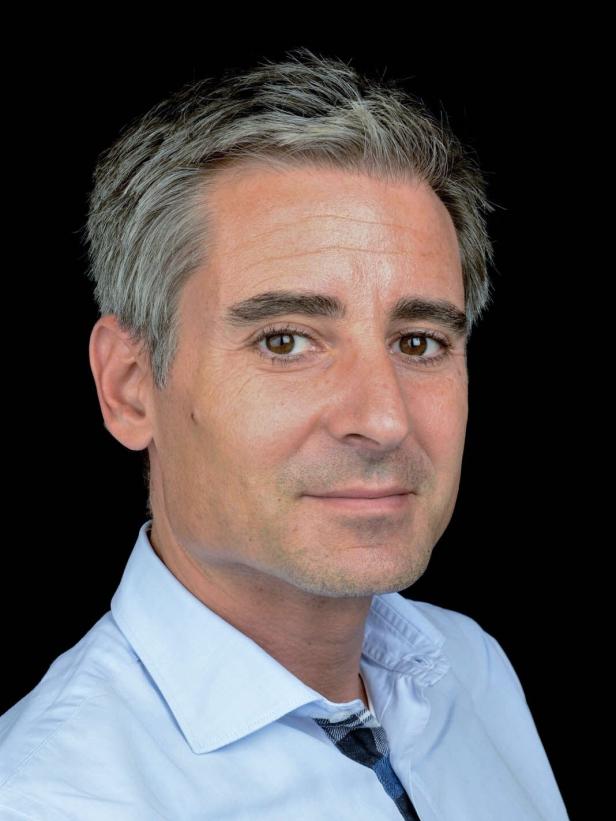The technology company Siemens has over 300,000 employees worldwide. 46,400 of them are employed in research and development. For some time, the company has concentrated its R&D activities in the most important of its business areas in 11 so-called technology fields articulated. Each of them has employees at several locations worldwide. They are usually managed from Germany or the USA. At the technology field Integrated Circuits and Electronics (ICE) is that different It is from Wien headed out.
Environment for the chip development process
“There was already a strong team in Austria. For example, it has a lot of experience for the real-time capable ones Control computer chips for drive technology. So many activities related to chip development have already taken place centrally in Vienna settled,” explains Herbert Taucher. He has been managing the global activities of the ICE technology field for three and a half months and wants to make what his team is working on more visible.
“When it comes to new computer chips, innovations from companies like Apple, Google or Tesla often gain notoriety to enable innovations at all and to develop little is known – and that comes from us.” Siemens is the third largest provider of software for chip developers. Taucher: “You need three things to develop a new chip. First: The chip design. Second: the materials. You need almost everything in the periodic table for this. Third, the manufacturing process.”
Herbert Taucher heads the Siemens technology field Integrated Circuits and Electronics
© Siemens
Build employee knowledge into tools
While there have previously been efforts to “General Purpose”-Produkt to create that could cover all use cases, the Specialized in chip development. What a chip must be able to do now results from the requirements for a specific system. “The chip is a building block that must have exactly the capabilities that you need,” says Taucher.
When developing chips, Siemens strives to support specialists as best as possible and to automate the design process to a high degree. Research is currently being carried out in the ICE technology field on how to do this collective knowledge of development engineers into development tools. “50 percent of the total cost of developing a chip is spent making sure there’s no bug in it. Those operations scream Machine Learning.” Using AI, decision-making processes in the verification of chips should be supported and accelerated.
Finding treasure in collected data
Chip development aside, the are around the world 150 employees in the ICE technology field also busy with other issues. One of them is the infrastructure for data analysis for industrial customers. Become one with the Internet of Things Massive amount of data generated, for example in industrial processes that work with Siemens products. “The data that is generated daily by Siemens controllers roughly corresponds to the amount of all Netflix content,” says Paul Pavetich, head of research at Siemens Austria. “There is one thing in common: Netflix content is never watched in its entirety. Neither is our data and there is still a lot of potential there.”
Together with customers, it is therefore important to find out what treasures are hidden in the data. One of the possibilities that often arises from data analysis is “predictive maintenance”. When it comes to data analysis, the focus is on increasing Edge Computing. Data is therefore increasingly being processed locally instead of being sent en masse to the cloud. This saves companies a lot of money, and it also speaks well sense of security at. “When data leaves the factory, there is often an escape reflex. You don’t necessarily feel very comfortable with that in the first step,” says Pavetich. So that data can also be automatically analyzed with less local computing power, work is being done on so-called “TinyML”, i.e. compact machine learning.
Paul Pavetich is the Research Director of Siemens Austria
© Siemens
Second life for industrial goods
A very large focus in the activities of the technology field ICE is on sustainability. In view of the climate crisis, the Carbon footprint of electronics at the center of many discussions. “We’re trying to find out how we can develop electronics that use as few raw materials and energy as possible,” says Taucher. “But it would also be advantageous if a second life cycle possible were. We know that from smartphones. In the end, they are refurbished and resold at a lower price. We will also see exactly such concepts in industrial goods.”
For the industry, however, it is important to have an accurate forecast to be able to give How long a product will still be usable. You also have to take into account how a system component was previously operated. In addition, balance in development is required. There shouldn’t be any components in a system that alone determine the service life.
More sustainable batteries
The lifetime of products and the “second life” also play an example batteries a major role, which the ICE technology field is also dedicated to developing further. There are many here Parallels to chip development, said Taucher. “With batteries, I also have to think about how I develop a cell, how I manufacture it, how I pack it into battery packs and how it behaves during the operating phase.” The recycling of batteries is a problem that is becoming more topical. Many of the first electric cars with lithium-ion batteries on the market are currently reaching the end of their useful life.
This article was created as part of a cooperation between futurezone and Siemens.


